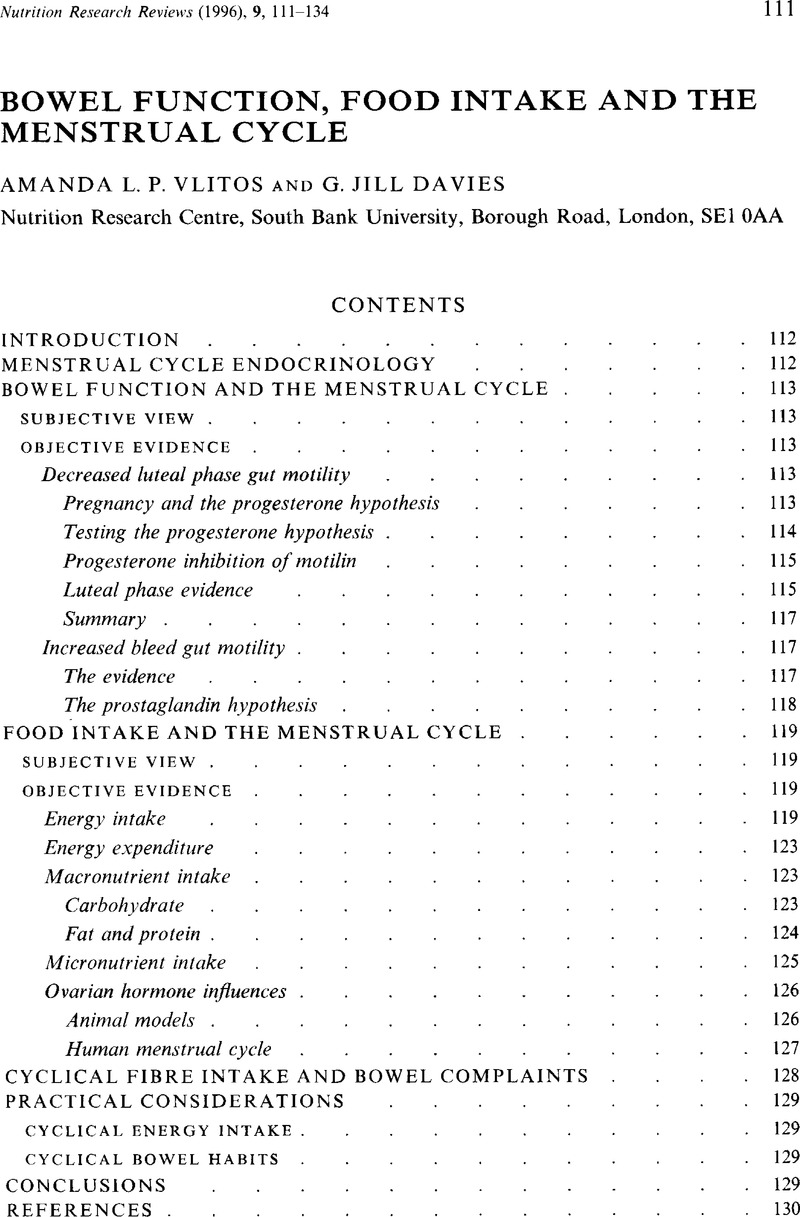Crossref Citations
This article has been cited by the following publications. This list is generated based on data provided by Crossref.
Davies, Jill
1998.
Constipation, fibre intake and the menstrual cycle.
Nutrition & Food Science,
Vol. 98,
Issue. 5,
p.
272.
Shaw, Allan D.
Brooks, Jillian L.
Dickerson, John W.T.
and
Davies, G. Jill
1998.
Dietary triggers in irritable bowel syndrome.
Nutrition Research Reviews,
Vol. 11,
Issue. 2,
p.
279.
Davies, G Jill
Dettmar, Peter W
and
Hoare, Roger C
1998.
The influence of ispaghula husk on bowel habit.
Journal of the Royal Society for the Promotion of Health,
Vol. 118,
Issue. 5,
p.
267.
Davies, Jill
Dettmar, Peter
and
Hoare, Roger
1998.
Efficacy of ispaghula husk in the treatment of premenstrual constipation‐type symptoms.
Nutrition & Food Science,
Vol. 98,
Issue. 6,
p.
335.
Benton, David
2002.
Diet - Brain Connection.
p.
15.
Benton, David
2002.
Carbohydrate ingestion, blood glucose and mood.
Neuroscience & Biobehavioral Reviews,
Vol. 26,
Issue. 3,
p.
293.
Benton, David
2004.
Coffee, Tea, Chocolate, and the Brain.
Vol. 20043667,
Issue. ,
Fleischman, Diana S.
and
Fessler, Daniel M. T.
2007.
Differences in Dietary Intake as a Function of Sexual Activity and Hormonal Contraception.
Evolutionary Psychology,
Vol. 5,
Issue. 3,
Jennings, Amy
Davies, G. Jill
Costarelli, Vassiliki
and
Dettmar, Peter W.
2009.
Dietary fibre, fluids and physical activity in relation to constipation symptoms in pre-adolescent children.
Journal of Child Health Care,
Vol. 13,
Issue. 2,
p.
116.
Benton, D.
2011.
Lifetime Nutritional Influences on Cognition, Behaviour and Psychiatric Illness.
p.
160.
Thakur, Joyeeta
Goswami, Monali
and
Roy, Subho
2020.
Understanding menstrual characteristics from the perspective of reproductive energetics: a study on the adolescent Oraon tribal populations.
Anthropological Review,
Vol. 83,
Issue. 2,
p.
109.



